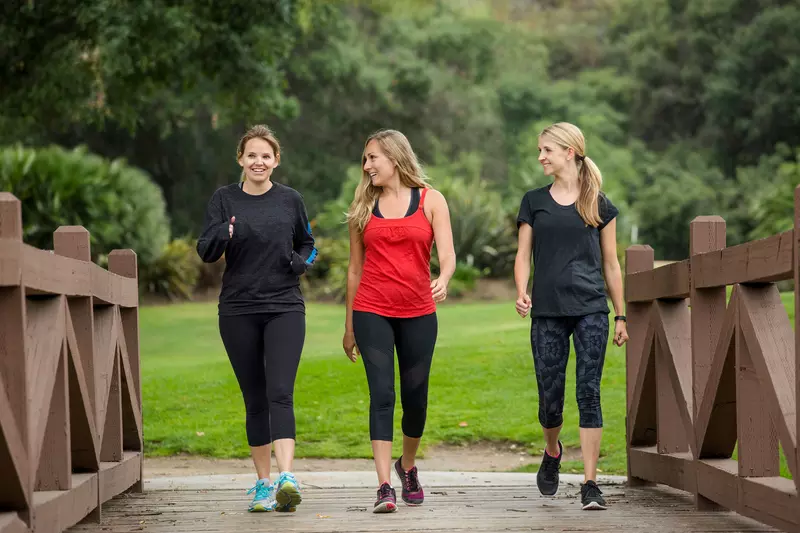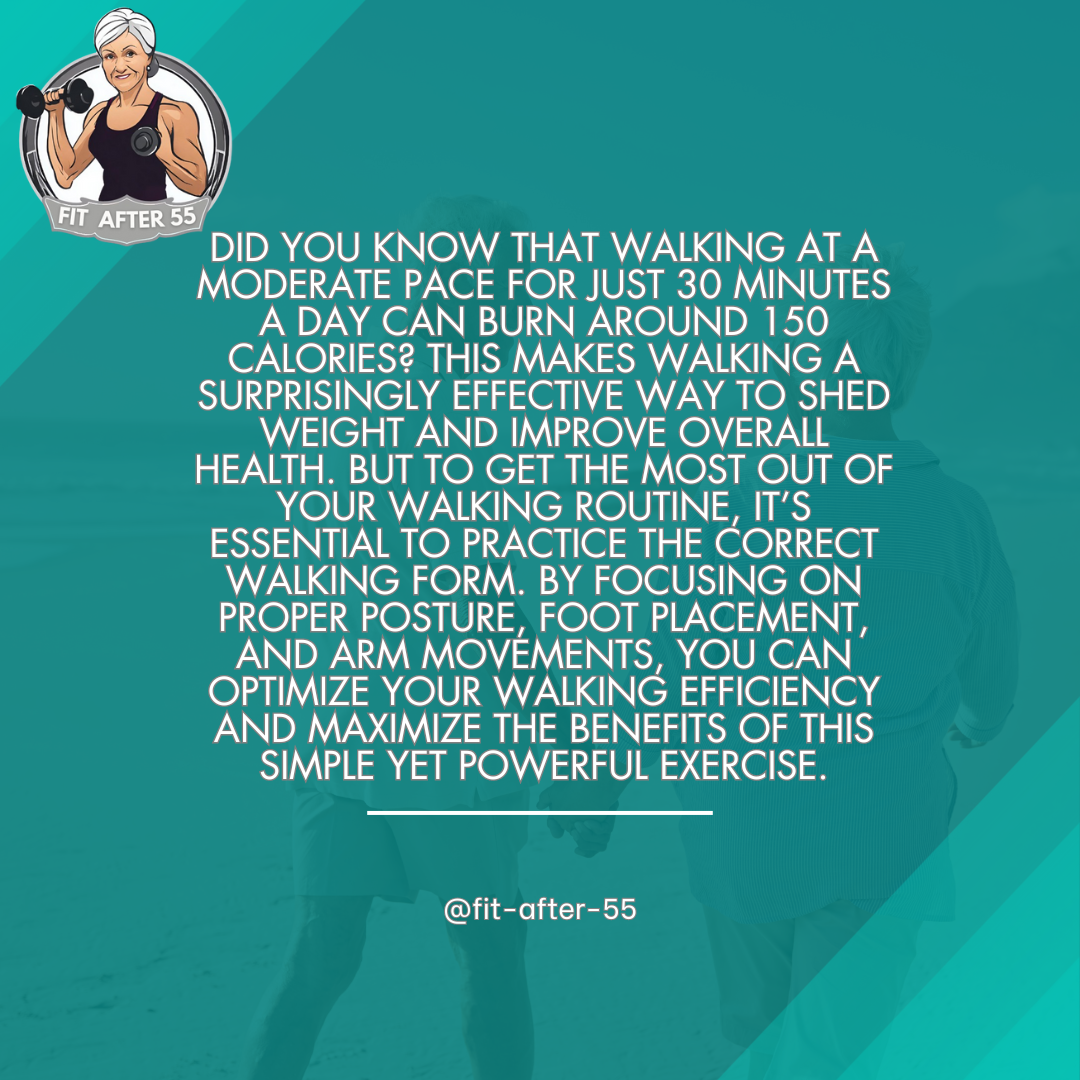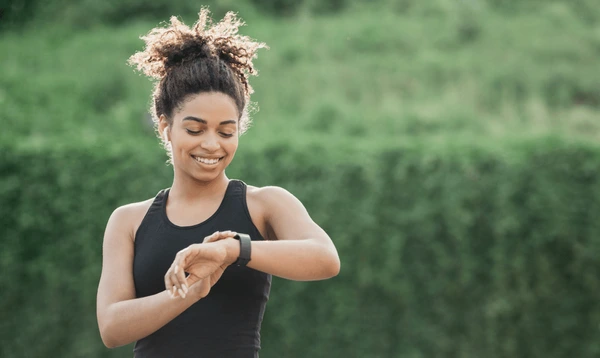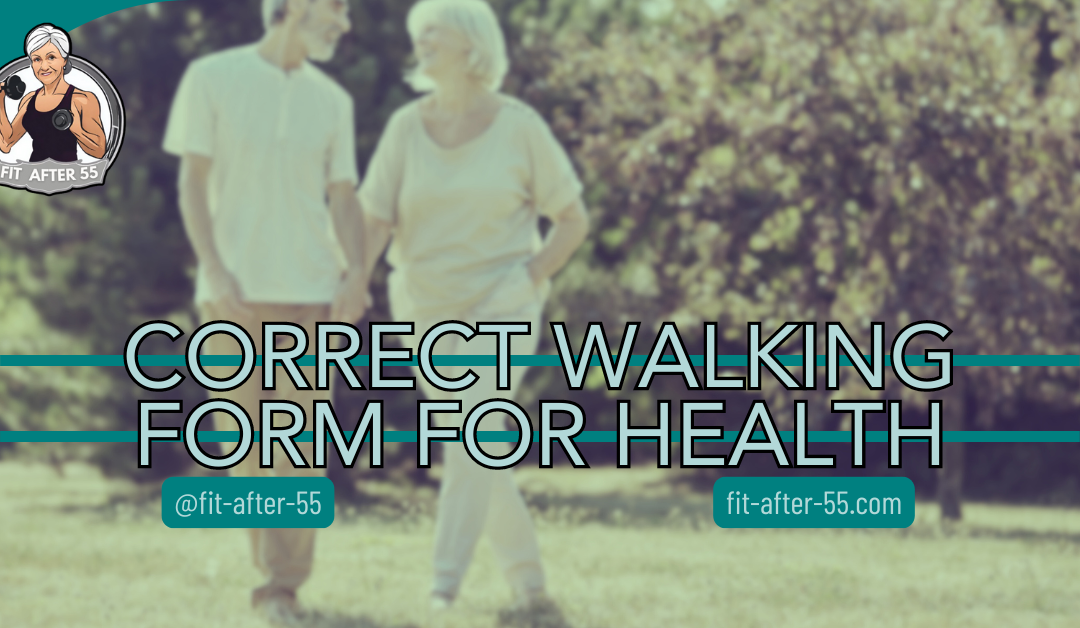Correct walking form for health is essential to maintaining overall well-being and preventing common injuries. Many people underestimate the impact of posture and technique on their body, often leading to discomfort or strain over time. Focusing on the correct walking form can improve your balance, strengthen key muscle groups, and enhance your endurance. Minor adjustments, such as maintaining an upright posture, aligning your hips, and using a proper heel-to-toe motion, can transform a casual walk into a beneficial exercise routine that supports long-term health.
Whether taking a relaxing stroll or hitting your daily step goal, practicing proper walking can significantly improve your physical well-being. Walking with intention helps reduce joint strain, increases energy levels, and boosts cardiovascular health. In this article, we’ll dive into the key elements of a healthy walking technique, exploring tips and insights that will help you perfect your form. By mastering these techniques, you’ll enhance your walking experience and unlock the full potential of this simple yet powerful form of exercise.
Proper Technique: Mastering Correct Walking Form for Health and Efficiency

Walking is an activity that most people do daily with little thought, yet mastering the correct walking form for health can significantly increase its benefits. Proper walking helps optimize your physical health, prevent injuries, and even turn a simple walk into an effective workout.
Understanding and applying the essentials of good walking form can enhance your endurance, engage the right muscle groups, and improve your overall fitness. The benefits of walking extend beyond mere calorie burning. A proper walking form can positively influence your posture and joint health, contribute to back pain relief, and boost your energy levels.
Additionally, considering the correct equipment, understanding the importance of warm-up and cool-down routines, and knowing how to integrate walking into your daily routine safely can maximize the positive effects of this simple yet powerful exercise.
Key Takeaways
- Proper walking form improves posture, endurance, and overall fitness, turning a simple walk into a powerful exercise for health.
- Correct walking technique reduces strain on joints and muscles, minimizing the risk of injuries and ensuring a safer walking experience.
- Adopting the right walking form, including correct foot placement and posture, makes each step more efficient, enhancing your walking routine.
- Practicing proper walking form helps improve balance and coordination, which is essential for maintaining mobility and preventing falls.
- Incorporating the correct walking form into your daily routine, such as during commutes or breaks, maximizes the health benefits of walking and supports a more active lifestyle.

The Importance of Proper Walking Form
Mastering the correct walking form is crucial for several reasons:

- Health Benefits: Proper form ensures that you maintain good posture and alignment, which lowers the risk of joint strain and muscular imbalances, contributing to overall joint health and endurance.
- Efficiency: When you walk with the correct technique, you make each step more efficient. This reduces fatigue and allows you to walk longer distances without exerting undue stress on your body.
- Injury Prevention: By walking correctly, you distribute weight evenly, which minimizes wear and tear on your muscles and ligaments, reducing the likelihood of injuries.
- Breathing: With a proper walking technique, your breathing can become deeper and more efficient, increasing your oxygen intake and energy levels.
- Appearance: Good walking form can change how others perceive you, giving you a confident and assertive presence.
Remember to keep your head up, shoulders back, and relaxed, with your arms swinging freely at your sides. Keep your core engaged and maintain a neutral pelvis to maintain the correct walking form for health. Doing so ensures your walking sessions contribute positively to your physical well-being and self-confidence.
Essentials of Good Walking Technique

Mastering the correct walking form for health involves focusing on several key aspects: proper posture, precise foot placement, controlled arm movement, and regular breathing patterns. Ensuring each element is addressed can enhance your walking experience and prevent discomfort or injury.
Posture and Alignment
To maintain a proper posture, imagine a string pulling you up from the top of your head, elongating your spine and neck. Your shoulders should be relaxed but straight, and your eyes should be looking forward, not down at your feet. Proper alignment is crucial, as highlighted by Harvard Health, as it helps to alleviate aches and enhances energy levels.
Foot Placement
Regarding foot placement, your heel should hit the ground first, rolling through to your toe with each step. This rolling motion not only propels you forward efficiently but also helps to absorb shock. Advice from Verywell Fit suggests that the proper technique can improve your walking speed and comfort.
Arm Movement
Arm movement can help balance and increase your pace. Your arms should be bent at a comfortable angle, about 90 degrees, and swing naturally with each stride. Ensure they move in coordination with your opposite leg to maintain balance, as recommended by The Healthy.
Breathing Patterns
Lastly, focus on your breathing patterns. Deep, rhythmic breaths can enhance oxygen flow and endurance. Practice breathing in through your nose and out through your mouth, establishing a comfortable rhythm that syncs with your steps.
Did You Know?
The heel-toe walking technique enhances walking form by distributing weight evenly, reducing impact on joints, and increasing stride efficiency. This technique promotes better balance and coordination by landing on the heel, rolling through the foot, and pushing off with the toes.
Warm-Up and Cool-Down Routines
Before you start your walking routine, it’s crucial to prepare your body with dynamic warm-up exercises and then help it recover with proper cool-down stretching. These steps can greatly enhance your walking performance, improve correct walking form for health, and reduce the risk of injury.

Dynamic Warm-Up Exercises
- Leg Swings: Stand on one leg and swing the other leg forward and back. Complete 10 swings on each leg to loosen the hip flexors and hamstrings.
- Walking Lunges: Step forward into a lunge position, ensuring your front knee doesn’t extend past your toes. Perform 10 lunges on each leg to engage your quadriceps and glutes.
Stretching for Cool-Down
- Hamstring Stretch: Place your heel on a low step, keeping your leg straight. Lean forward gently until you feel a stretch at the back of your leg. Hold for 15-30 seconds for each leg.
- Calf Stretch: Press your hands against a wall and extend one leg back, keeping the heel on the ground. Lean forward, keeping the back leg straight, to feel a stretch in the calf. Hold for 15-30 seconds for each leg.
Watch this video on how to walk properly to improve your form and overall health.
By: Upright Health
Common Walking Errors and Corrections

Mastering the correct walking form for health can significantly enhance your workout efficiency and reduce the risk of injury. Focus on these corrections to common mistakes to ensure you walk with the best form.
Overstriding Correction
Overstriding occurs when your lead foot lands well ahead of your body’s center of gravity. This can cause excessive stress on your lower back and legs. Aim to have your foot land directly under your body to correct overstriding. Additionally, your steps should be quicker and shorter to maintain a smoother gait.
Improper Arm Swing Adjustment
Swinging your arms incorrectly can throw off your balance and walking rhythm. Keep your arms at a 45-60 degree angle and swing them forward and back, not across your body. Your left arm should swing forward with your right leg, and vice versa. This reciprocal motion helps propel you forward more efficiently.
Fixing Poor Posture
Poor posture while walking can lead to back and neck pain. Proper posture means keeping your head up and shoulders back and relaxed. Your eyes should look forward, about 10-20 feet ahead, not down at the ground. Engage your core muscles to keep your spine aligned and prevent slouching.
Advanced Techniques for Effective Walking
To walk effectively, focus on techniques that enhance speed, tackle varied terrains, and build endurance. Each advanced method offers a pathway to amplify the benefits of your walking routine, and mastering the correct walking form for health ensures you’re getting the most out of every step.
Speed Walking Tips
Speed walking, or power walking, is an excellent way to increase cardiovascular fitness and calorie burn. Concentrate on rapid, short strides and engage your core to enhance your pace. Arms should be bent at approximately 90 degrees and must swing in sync with your opposite leg to maintain momentum.
- Stride Length: Aim for quick, short strides to boost speed without overstraining.
- Arm Movement: Keep your arms at a 90-degree angle and swing them harmoniously with your legs.
Incline and Terrain Variation
Incorporating inclines and different terrains can significantly improve the intensity of your walking workout and help maintain the correct walking form for health. When walking uphill, lean forward slightly and push off with your toes to maximize power. On irregular terrains like trails, focus on stable, deliberate steps to train your balance and engage more muscle groups.
- Uphill Technique: Lean in and use your toes for maximum propulsion.
- Varying Surfaces: Walk on trails or beaches to challenge your stability and strengthen muscles.
Endurance Building Strategies
To build endurance, gradually increase your walking duration and distance while maintaining the correct walking form for health. Intersperse your walks with short bouts of brisk walking or gentle jogging intervals. Ensure to stay hydrated and listen to your body, taking breaks as needed.
- Progressive Training: Slowly lengthen your walking time and distance.
- Rest and Hydration: Take breaks and maintain hydration to prevent fatigue.
Equipment and Gear for Walking

When commencing your walking routine, selecting appropriate footwear, attire, and certain accessories can significantly enhance your comfort and performance. Additionally, focusing on the correct walking form for health ensures that you maximize the benefits of your exercise while minimizing the risk of injury.
Selecting the Right Footwear
Choose shoes that offer ample support and cushioning to prevent injuries and minimize strain on your feet when walking. Look for a comfortable fit with a flexible sole to encourage natural foot movement. It’s key that the heel counter, which is the back part of the shoe, is not too tight or too loose but provides stability.
Appropriate Walking Attire
Your clothing should be lightweight and breathable to keep you comfortable and dry. Fabrics that wick moisture away from your skin are ideal. In warmer climates, opt for lighter colors to reflect sunlight, while in cooler environments, dress in layers that you can remove as you warm up.
Useful Walking Accessories
Walking accessories can vary based on your needs. Nonetheless, a few useful items include:
- Water Bottle: Stay hydrated with a bottle that’s easy to carry or a hydration pack.
- Pedometer or Fitness Tracker: Keep track of your steps and progress.
- Sun Protection: Apply sunscreen and consider a hat or sunglasses if walking in sunny conditions.
Tracking Progress and Setting Goals
Effectively monitoring your walking routine and setting well-defined goals is fundamental to achieving your fitness objectives, especially when focusing on the correct walking form for health. Utilizing modern tools to track progress helps you stay motivated and recognize improvements over time.

Using Pedometers and Fitness Trackers
Fitness trackers and pedometers serve as essential tools for advancing your walking regimen. They provide immediate feedback on your activity levels, ensuring you can quantify the number of steps taken and the distance covered. Consider devices that sync with mobile apps, offering detailed analytics and historical data to monitor your progress.
- Steps: Aim for a daily target that challenges you yet is within reach.
- Distance: Gradually increase the distance, tracking your longest walks.
- Calories Burned: Use this metric to understand your energy expenditure.
Establishing Realistic Walking Goals
Setting attainable goals is pivotal to maintaining your walking practice. Start with short-term objectives to build momentum, then layer on more ambitious long-term goals.
- Initial Goal: Walk 10,000 steps daily for a week.
- Progression: Increase daily steps by 5% each week.
- Ultimate Goal: Walk a half marathon distance within six months.
Injury Prevention and Safety Tips

They effectively prevent injuries while walking, which involves awareness of common issues and understanding the correct walking form for health. Knowing how varying weather conditions can impact your safety is also crucial. These tips can lead to a more enjoyable and injury-free walking experience.
Dealing with Common Walking Injuries
When you embark on regular walking, you must know that injuries like blisters, shin splints, and plantar fasciitis may occur. For blisters, ensure that you’re wearing well-fitting shoes and moisture-wicking socks.
In the case of shin splints, proper walking techniques and gradually increasing your distance can help prevent pain. If plantar fasciitis strikes, consistent stretching, and proper foot placement are key to relief and future avoidance.
| Common Injury | Prevention Tip | Management |
|---|---|---|
| Blisters | Right-sized shoes | Protect and pad |
| Shin Splints | Increase distance slowly | Rest and ice |
| Plantar Fasciitis | Stretch regularly | Supportive footwear |
Walking in Different Weather Conditions
Walking in various weather conditions necessitates different precautions. In hot weather, hydration becomes critical alongside the application of sunscreen and wearing breathable clothing.
During cold spells, layer your clothing and focus on keeping your extremities warm to prevent frostbite. Suppose wet or icy shoes have good traction and are essential to prevent slips and falls. Be mindful of the changes in your walking form due to the attire and surfaces, and adjust accordingly for safety.
- Hot Weather: Stay hydrated, apply sunscreen, and light clothing.
- Cold Weather: Layer up, protect extremities, maintain warmth.
- Wet/Icy Conditions: Shoes with traction, careful foot placement.
Integrating Walking Into Your Daily Routine
Walking regularly improves cardiovascular health, tones muscles, and enhances mood. To fully benefit from these improvements, it’s crucial to practice the correct walking form for health and seamlessly blend walking into your everyday life.

Making Time for Walking
- Morning Boost: Start your day with a brisk 10-minute walk. It’s a simple, effective way to energize your morning.
- Lunch Breaks: Dedicate 15 minutes of your lunch break to walking. Not only will you digest your food better, but you’ll also return to work more focused.
Incorporating Walking in Commutes
- Park Further Away: Choose parking spots a few blocks away from your office, or get off public transportation one stop earlier to include a walk in your commute.
- Bike to Walk: If you cycle, combine it with walking by parking your bike at a distance and walking the remaining part of the journey.
Walks for Mental Clarity
- Mindful Steps: During your walks, practice mindfulness by focusing on your surroundings and sensations, which can lead to increased mental clarity.
- Scheduled Breaks: Set reminders to take short, five-minute walking breaks throughout your workday to clear your mind and reduce stress.
Watch this video where a physical therapist demonstrates the proper way to walk for optimal health.
By: Bob & Brad
Maximizing Health Benefits: The Importance of Correct Walking Form for Optimal Well-Being
Mastering the correct walking form is crucial for overall health and well-being. Adhering to proper walking techniques enhances physical fitness and helps prevent common injuries. Correct walking form for health reduces strain on joints and muscles, leading to a more comfortable and sustainable exercise routine. Individuals can transform a casual walk into a highly effective fitness activity by making small yet significant adjustments, such as improving posture and foot placement. With these changes, walking can become vital to a healthy lifestyle.

Incorporating the correct walking form for health into daily routines offers numerous benefits, from reduced joint strain to increased energy levels and cardiovascular health. Good walking techniques can also improve balance and coordination, which are essential for overall mobility and injury prevention. This article provides key insights and practical tips to help refine walking techniques, ensuring that every step contributes positively to one’s physical well-being. By adopting these practices, readers can maximize the advantages of walking and embrace a healthier, more active lifestyle, making it a rewarding and sustainable exercise choice.
Frequently Asked Questions
What Are the Essential Components of a Proper Walking Posture?
To achieve a proper walking posture, keep your head up and your gaze forward, shoulders relaxed, and back straight. Let your arms swing naturally with a slight bend at the elbow, and maintain a neutral pelvis, aligning your ears with your shoulders and hips.
Can You Outline the Step-by-step Process for Walking With Correct Form?
Begin by standing straight with your feet hip-width apart. Engage your core muscles slightly, then step forward with one foot, landing on the heel. Roll through to the toe, and push off with your back foot. Continue this movement fluidly with each step, maintaining proper alignment and posture.
What Exercises Can Improve My Posture While Walking?
Strengthening exercises for your core, glutes, and leg muscles can improve your walking posture. Try planks, squats, and leg lifts to build stability, which helps maintain a better posture as you walk, as suggested by experts on proper walking form.
How Does Walking Technique Vary for Different Individuals, Such as Women?
Individual variations in anatomy and physical condition, like hip width or foot arch height, can affect walking technique. For instance, women may require different support due to wider hips, meaning attention to proper footwear and stride length might vary.
What Are Some Common Mistakes to Avoid for Maintaining Effective Walking Technique?
Common mistakes include looking down too much and slouching the shoulders. Overstriding and not using your arms effectively are also common mistakes. To prevent these issues, focus on maintaining a neutral spine. Also, avoid taking excessively long steps and swing your arms from the shoulders, not the elbows.
Stay Energized and Flourish: Join the Fit After 55 Community!
Explore a world of fitness motivation with Fit After 55!
Visit our website (https://www.vitalityseniorliving.com/resources_for_senior/staying-fit-at-55/) for valuable insights, expert guidance, and product reviews designed specifically for seniors. Connect with our vibrant community on Facebook (https://www.facebook.com/fitafter50dotcom/) and engage with others dedicated to staying healthy and active.
Let’s embrace this fitness journey together—proving that age is just a number!

